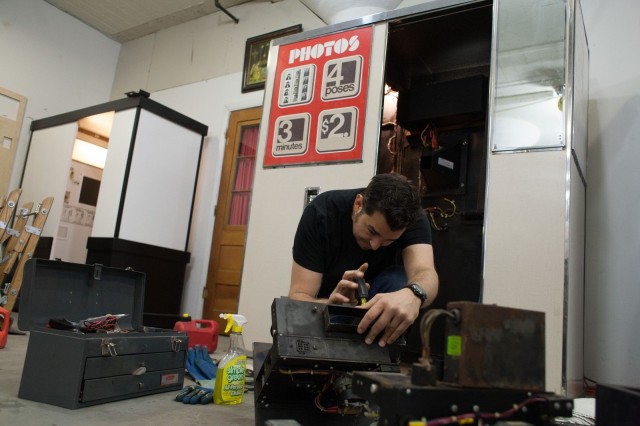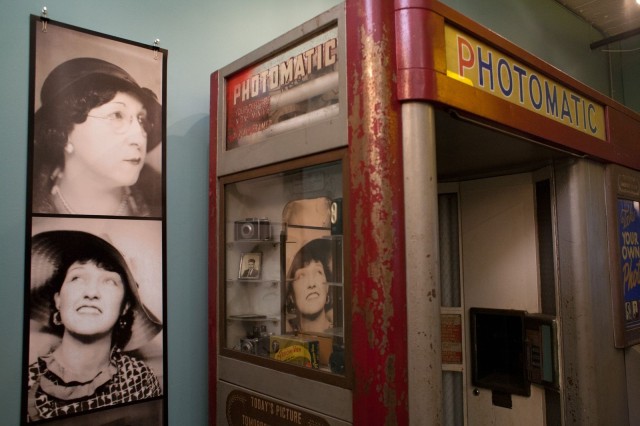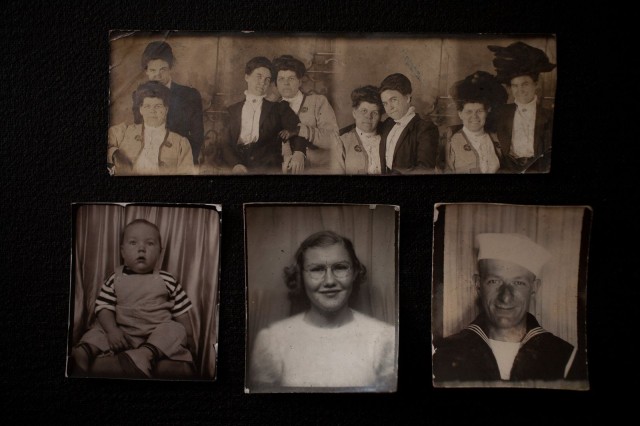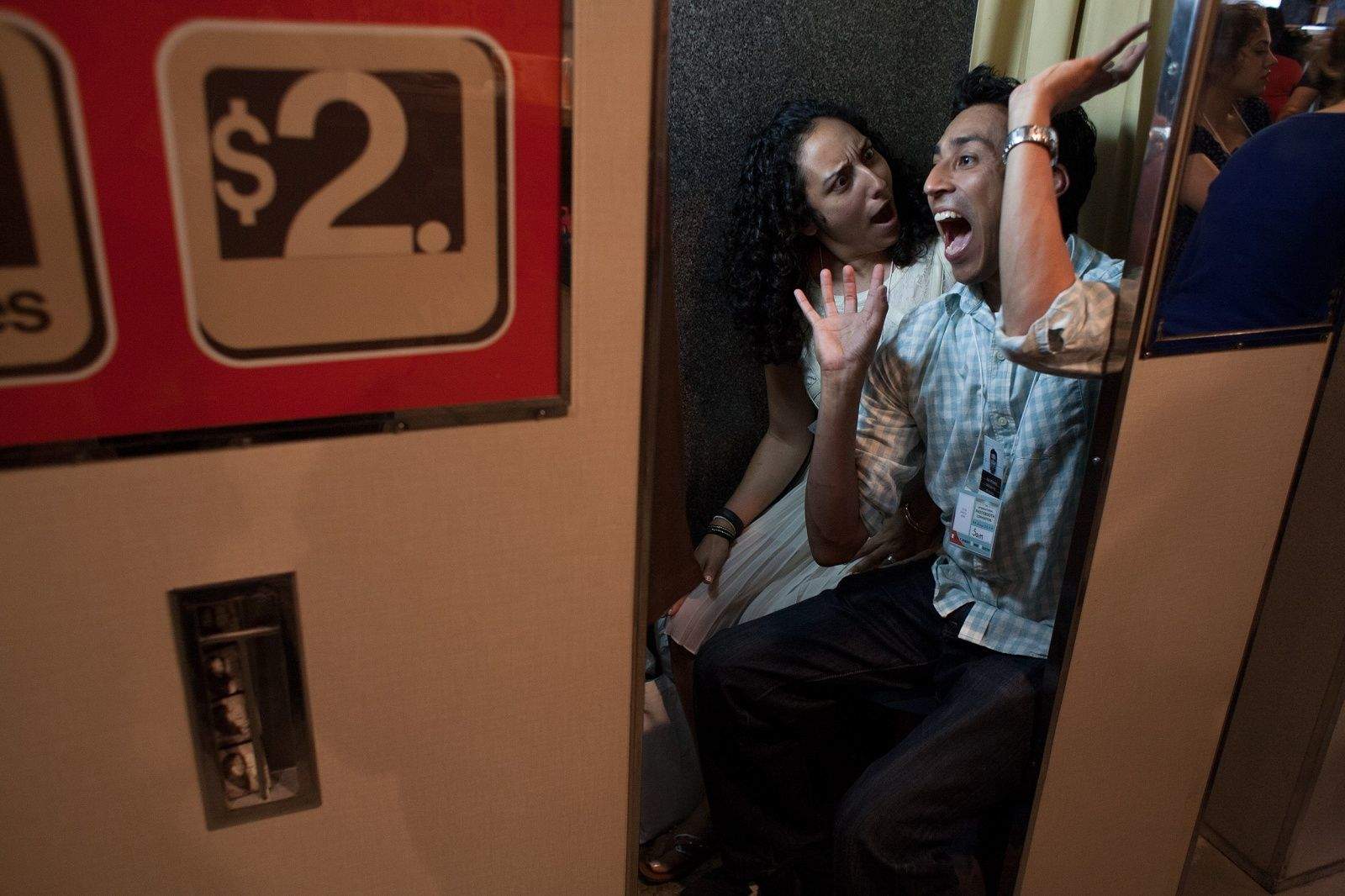Anatol Josephwitz passed the time in a Siberian prison camp and ignored the bitter cold by imagining an automated photography machine he had not yet invented.
 Nearly 95 years later, the photo booth is as tough a survivor as its inventor.
Nearly 95 years later, the photo booth is as tough a survivor as its inventor.
Photo booth adventurers across many generations have described a magic that takes place when the curtain is drawn and the camera is awakened by placing a few coins in a slot. Inhibitions fall and an authentic inner self emerges on a strip of four photos. Best friends smash their faces together, a girl on a boy’s lap gives him his first kiss, and a wide-eyed college kid proudly mugs for a shot that will get pasted into a first passport.
Many of the so-called dip-and-dunk chemical machines, the kind found in arcades, amusement parks and bus stations, are disappearing, but replacing them are booths with digital cameras and dye-sublimation printers.

“The technology is changing, but the experience in the space is the same,” said Anthony Vizzari, whose A & A Studios in Chicago restores old photo booths and builds new digital machines. “People in their 20s probably don’t know or care about the difference between analog or digital. It’s kind of like taking a long walk on a sunny day and listening to music with a Walkman or an iPhone. The media doesn’t really matter — the experience is still the same.”
The photo booth is in no danger of going away, Vizzari said. He and his small staff build 50 booths each year with maybe 10 of those being restoration jobs on chemical machines. Reached this week, he was preparing to ship 10 new machines to Uzbekistan, where he said a couple of owners report as many as 100 hundred sessions a day in their booths.
Vizzari and his wife opened the studio eight years ago, inspired by the photo booth they rented for their wedding.
He admits it’s not a business that will make them rich. He has a staff that includes a woodworker, an electrician, a machinist, plus workers on contract for big orders. He is a hoarder of parts and photographic paper (he says there are no more than 10 companies left in the world producing photo paper) and also finds revenue in servicing some 20 machines, mostly in bars, around Chicago.
“Flickr just bought a chemical booth for their offices and I am helping them with the chemistry,” Vizzari said. “They are very much a digital company and they wanted a dip-and-dunk booth. I love it.”

Automated photo machines were around as early as the late 1890s, but it was Josephwitz, who fled to the United States after surviving prison camp during the first World War, who sought funding to develop the Photomaton in 1925. (He later shortened his surname to Josepho.)
While many companies since have perfected the process, the Photomaton was the first machine that became the little studio booth we know today.
The medium, obviously, does matter for some. The digital booths produce relatively perfect photos, where the murky, brownish strip of photos produced by a chemical booth is coveted for its imperfections as much as the poses of the people in the pictures.
Chemical booths survive today because of an enthusiastic community of artists and collectors. Some of these enthusiasts meet each year at an international photo booth convention. A state-by-state and country-by-country listing of all the known photo booths can be found on photobooth.net.
One of the fiercest torch carriers for photo booths is Canadian artist Meags Fitzgerald, featured in Cult of Mac last year after she published a graphic novel-style history of the photo booth that also explained her love affair with posing in them. The book, PhotoBooth: A Biography, details the story of Josephwitz’s rise as an inventor and businessman.
Fitzgerald is well-known in the photo booth community and Canada’s art scene for the movies she creates and stars in. She makes her dreamlike stories out of hundreds of pictures taken in a photo booth.
“Photo booths don’t present a negative,” Fitzgerald told Cult of Mac. “It’s a direct positive photo. Every photo is entirely unique, so each one is sort of precious. The thing that doesn’t appeal to me about digital photography really is the lack of ability to preserve them. We think we’re taking a lot of photos now, but we’re not actually leaving any records. We’re leaving digital data that gets corrupted or destroys itself. (With analog photos), I like the physical aspect that is left behind.”



